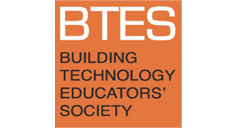In Spite of Pragmatics: The Pursuit of Both/And for Integrated Architectural Solutions
Abstract
Architectural design studios that are tasked with the responsibility of addressing and demonstrating NAAB criteria for Integrated Architectural Solutions (IAS, formerly Comprehensive Design) can, by their very nature, become venues for promoting strict pragmatism. By its very definition pragmatism is primarily concerned with relating to matters of fact or practical affairs often to the exclusion of intellectual or artistic endeavors - thus setting up a preferential condition by which project proposals may be evaluated. Pursuits to such an end, although perhaps expressing a certain level of competency and technocratic ability, more often than not fall short of higher architectural aims. The challenge being that good/great design is difficult to define through a set of predetermined instructions, formalized processes, or applied systems. For example, utilizing a highly-sophisticated filtration and distribution system for capturing rainwater to be used in gray-water systems throughout a project does not automatically define the project as exceptional. On the contrary, the pursuit of the exceptional is one that is extremely difficult to define because it is often unspoken. For the Indian architect Balkrishna Doshi the architectural endeavor is:
a search for the unknown which (is) not known, neither do I know how it will manifest. It begins somewhere, it ends somewhere, and in that process, I grow and the work grows. And we both grow together.1
Because of its elusiveness, the true value of a proposal is often only revealed at a much later time and in unexpected ways.
Keywords: pedagogy, comprehensive design, NAAB, Student Performance Criteria (SPC), technology, creativity
How to Cite:
Herrmann, H. & Gines, J., (2019) “In Spite of Pragmatics: The Pursuit of Both/And for Integrated Architectural Solutions”, Building Technology Educators’ Society 2019(1). doi: https://doi.org/10.7275/btes.491
Downloads:
Download PDF
170 Views
64 Downloads

